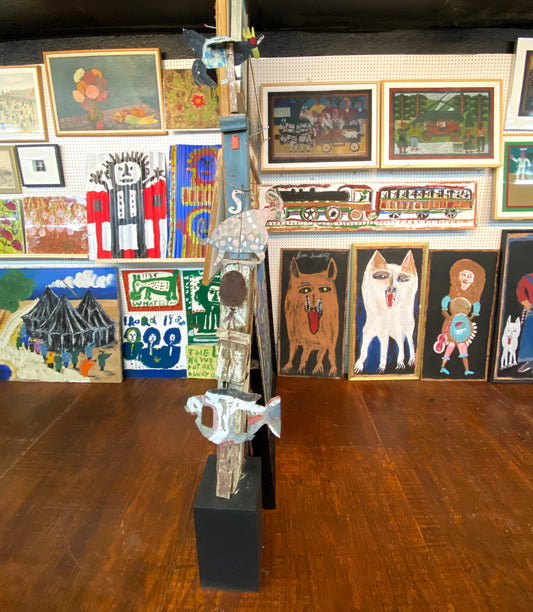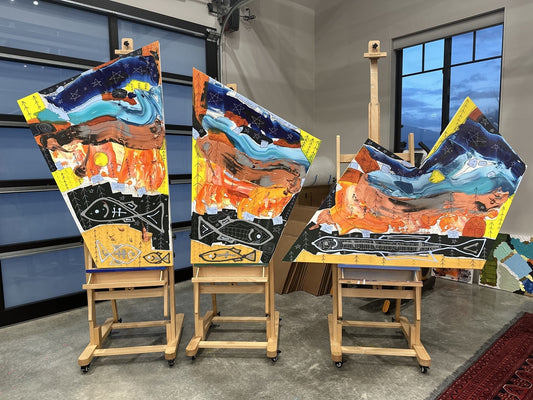First published: Spring 2016
In a small village in France, Loïc Lucas works ten hours a day on his drawings. Governed by an obsessive preoccupation with organic bodies, he works with intense focus, listening intently to an inner drive that he has difficulty explaining. He works alongside his wife, artist Stephanie Lucas. She paints other-worldly landscapes rich in colour and detail. They hearken to Hieronymus Bosch and were discovered barely five years ago when she premiered at an exhibit at the American Visionary Art Museum. An article here in Raw Vision followed shortly after, and Loïc, having encouraged her creative expression, was her muse – his passion helped foster her self-assurance. Lucas’s art captivated her, and a magnetism between the two developed quickly. He saw in her a native talent; she saw in him the possibility of a life in art. Together, they find higher purpose. Lucas’s art first drove that connection.

Loïc Lucas, born in Troyes in north-central France, has been drawing since childhood, but he did not pursue his compulsion to draw full-time until the early 2000s. For over a decade, he criss-crossed France in search of a way to make a living, working as an itinerant labourer in too many places and jobs to count. In about 2006, he finally secured steady work as a postman in the village of Valbonne, in the hills above Cannes near the south-east coast.
The work promised steady income and some stability, and it seemed to Lucas’s family that he had finally found his footing. When he left that work to pursue his art, however, his parents were dismayed, unable to reconcile an adult son’s decision to cast aside future stability with their own visions of the world. Except for a brother, his family still doesn’t fully understand his decision to leave behind steady work to spend his time drawing. A life in art, painting day in and day out and pursuing what must seem to them to be a glorified hobby, remains as foreign to them as choosing to spend a life surfing or peddling trinkets. Lucas, however, feels compelled. He describes his life in art not so much as a choice, but as a need to gather and convey some distant but insistent sound that resonates in his world. He hears, he believes, frequencies that most cannot imagine, even seeing them in the colours he uses when he draws and paints. His job, he believes, is to make them heard – by making them visible, in the same way that a private whisper might be converted into a printed note.

He is explicit in using the analogy of frequencies when describing his work, and it provides a critical lens through which to view his art. He links his first moment of recognising the power of art to his own musical history. As a young man, he saw artwork on the back of one of his brother’s LP records. The record was playing, but it was an American album and he could not understand the words. Today, he cannot identify which record it was, but the instruments sung to him. Something inside him began to vibrate and his life was changed. The music became wedded to the visual art of the album, and his life began to revolve around ways of expressing that inner vibration of sound and colour.
It was years before he fully recognised that drawing offered him an outlet for those inner frequencies. As a child he drew a lot. He sometimes sketched on comic book covers, but the first thing he remembers creating was a drawing of a fly. He lost that image while still young, but years later, while moving some items at his parents home, he rediscovered it just as he was preparing for a show in which, by odd coincidence, he was including an image of a fly. The rediscovery struck him as providential, and he committed himself more fully to his work.
This is an article extract; read the full article in Raw Vision #89




